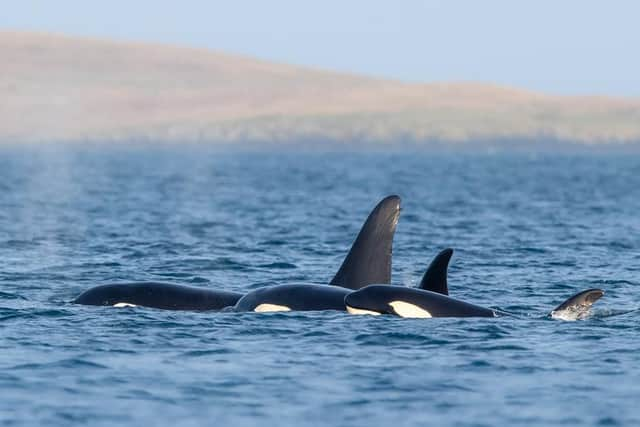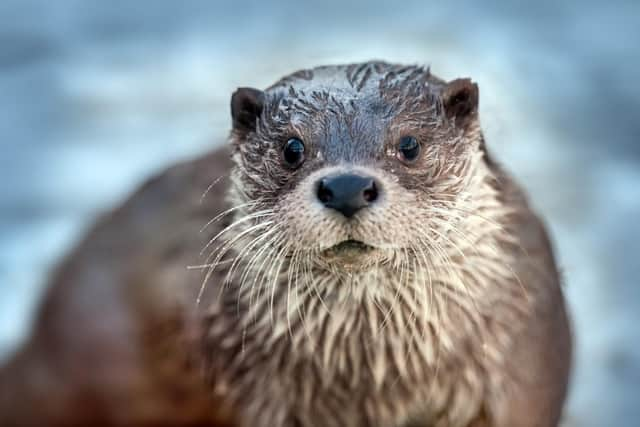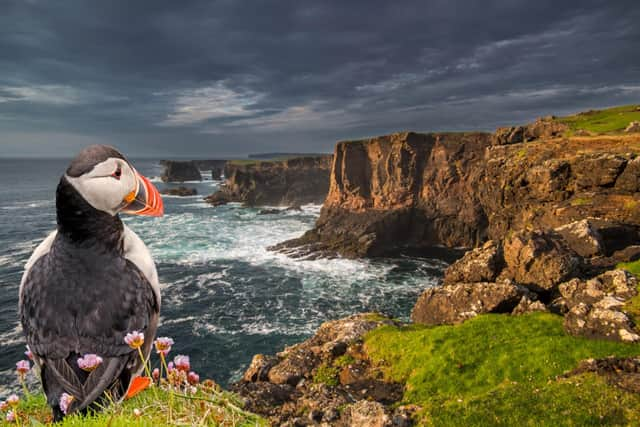Shetland: Why Scottish islands are a mecca for viewing killer whales, otters, seabirds and ponies
Scotland’s most northerly outpost has become a mecca for wildlife enthusiasts, thanks to a reputation for almost guaranteed sightings of some of the country’s most iconic wildlife species.
Shetland, an archipelago of more than 100 islands, has an almost unique natural environment due to its location – around 130 miles north of the Scottish mainland.
Advertisement
Hide AdAdvertisement
Hide AdWhales, dolphins, seals, native ponies and vast colonies of seabirds are just some of the creatures commonly seen around its rugged coastline.
It is also a hotspot for unexpected appearances by rare visitors not usually found in the area. A white beluga whale hit the headlines after being spotted swimming in Shetland waters in January, while an internationally famous walrus named Freya holidayed in the isles a couple of years ago.
Humans are also coming in droves, in person and virtually, to witness nature at its wildest.
The islands have long been a popular destination for bird-watchers, but now two particular species are attracting growing audiences – orcas and otters. Orcas, or killer whales, are being spotted increasingly often in Shetland waters, almost every week throughout the year.


Now, thanks to tip-offs on social media, visitors have a strong chance of being able to see the distinctive black-and-white predators from the shore as they come in to hunt.
The Shetland Orca Sightings page on Facebook, set up in 2016, today has 45,000 members. It reports and tracks sightings in real time, allowing people to get to a coastal viewpoint and see the ocean giants for themselves.
Shetland has also become a favourite haunt for otter-spotters. With the densest population of otters in Europe, the islands host between 800 and 1,000 individuals.


They attract many visitors each year, keen to catch a glimpse of the shy and elusive mammals as they duck and dive, playing and catching fish – sometimes with cubs in tow.
Advertisement
Hide AdAdvertisement
Hide AdThe islands are benefiting from this rising interest in nature, with many local businesses capitalising on eco-tourism.
Brydon Thomason runs Shetland Nature, an award-winning tour company offering wildlife, birding and photography trips in the islands.
“We are very excited to see such enthusiastic demand continuing for Shetland,” he said.


“Already the season ahead is set to be very busy, with the majority of our core season itineraries already full. It has been really positive to see the market grow for visitors looking to combine wildlife-watching experiences with the wider interests of walking, culture and heritage, which together really stand the isles out as such a must-visit location.”
Steve Mathieson, Shetland development manager for VisitScotland, said: “The great thing about being able to wildlife watch in Shetland is that you can do it all year round – many people come in the winter, when it’s quieter, and still get to see the orcas or otters.
“It can be a free experience, as sightings can be done from the shoreline. But there are some fantastic expert tours and guides on the islands who can help and advise people on where and when to spot wildlife safely and responsibly.
“With an orca sighting almost every third day last year and numerous visits from other cetaceans, including sperm, humpback, minke and fin whales, this is a big attraction for visitors. From what we can see, wildlife-watching in general is definitely growing in popularity in Shetland.”
Comments
Want to join the conversation? Please or to comment on this article.